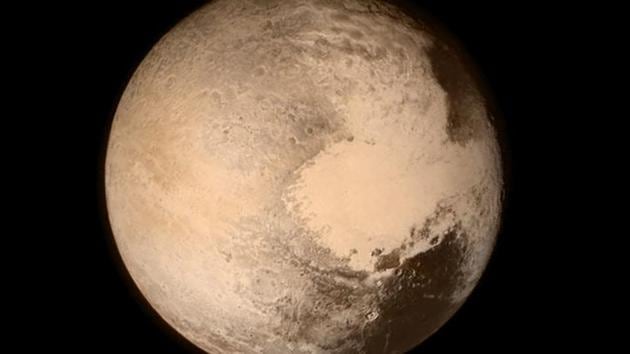Pluto’s planetary status: Is the classification system outdated?
Pluto lost it’s planet status in 2006. But the debate on its planet-hood is far from done. Scientists at the 48th annual Lunar and Planetary Science Conference in Houston discussed whether it should be reinstated as a planet.
Planetary scientists and astronomers furiously debated if Pluto should regain its planet-hood at the 48th annual Lunar and Planetary Science Conference in Houston last month . The International Astronomical Union (IAU) had stripped Pluto of this status in 2006.

When Pluto was discovered in 1930, it was hailed as the ninth planet in the solar system based on an overestimation of its size. But it looked out of place among the larger planets following the discovery of swarms of ‘ice dwarfs’—icy rocks in the Kuiper Belt, at the very edge of the solar system billions of miles from the Sun. This prompted some astronomers to suggest that Pluto could be just another Kuiper Belt Object (KBO), disappointing generations of schoolchildren who grew up learning that Pluto was the smallest planet in the Sun’s family.
On the other hand, this was also a question of semantics. For Pluto is clearly big enough for gravity to give it a round shape like any planet (unlike KBOs that tend to be misshapen), and it revolves around the Sun like other planets. It has an atmosphere and seasons, too. Nasa’s New Horizons mission that visited Pluto in 2015 sent back spectacular images of water ice mountains and a heart-shaped plain, suggesting nothing un-planet-like about Pluto.
When the IAU demoted Pluto to a “dwarf planet”, it spelt out three conditions that a celestial body must meet to qualify as a planet: 1) it must be round; 2) it must orbit the sun; and 3) it must have “cleared the neighbourhood” of its orbit (a planet’s gravity sweeps and clears the space around it of other objects). Pluto follows the first two rules, but it hasn’t cleared the neighbourhood of its orbit—which put it in the category of “dwarf planets”. (Of the five known dwarf planets, Pluto, Makemake, Haumea and Eris are located beyond Neptune. The fifth, Ceres, is located in the asteroid belt between Mars and Jupiter.)
This was unacceptable to many scientists who wanted Pluto reinstated as a planet. The IAU definition, they argued, applies only to bodies in this solar system, being silent on objects orbiting other stars. In any case, the zone clearing clause also affects Earth, Mars, Jupiter, and Neptune, none of which has a clear orbital zone. Earth orbits with 10,000 near-Earth asteroids, while Jupiter’s path is littered with over 100,000 ‘Trojan asteroids’ (chunks of rubble left over from the Solar System’s formation more than four billion years ago). As for Neptune, if it were to clear its zone, there would be no Pluto in the first place!
At the Houston meet, some scientists offered an alternative “geophysical definition” based solely on an object’s core characteristics rather than its orbital dynamics. But this broad definition— that a planet should be large enough to be round, but not big enough to be a star—would make not only Pluto, but the moon and scores of other Solar System objects, planets.
So, by all accounts, the jury still is out on Pluto’s planetary status. This is hardly surprising, considering the debate is, in a sense, all about splitting hairs. Boffins should instead try and refine the existing classification system for celestial bodies that is being outdated by the minute with each new discovery in space.
As for Pluto, they would be better off wondering what Pluto is like, rather than what it is. For only by learning more about the bodies in the outer solar system can scientists get to know how the inner Solar System was born. And Pluto—no arguments here—provides the best ‘window’ to ‘see’ 4.6 billion years back in time when planets formed in the infant solar system.
Prakash Chandra is a science writer. The views expressed are personal.





